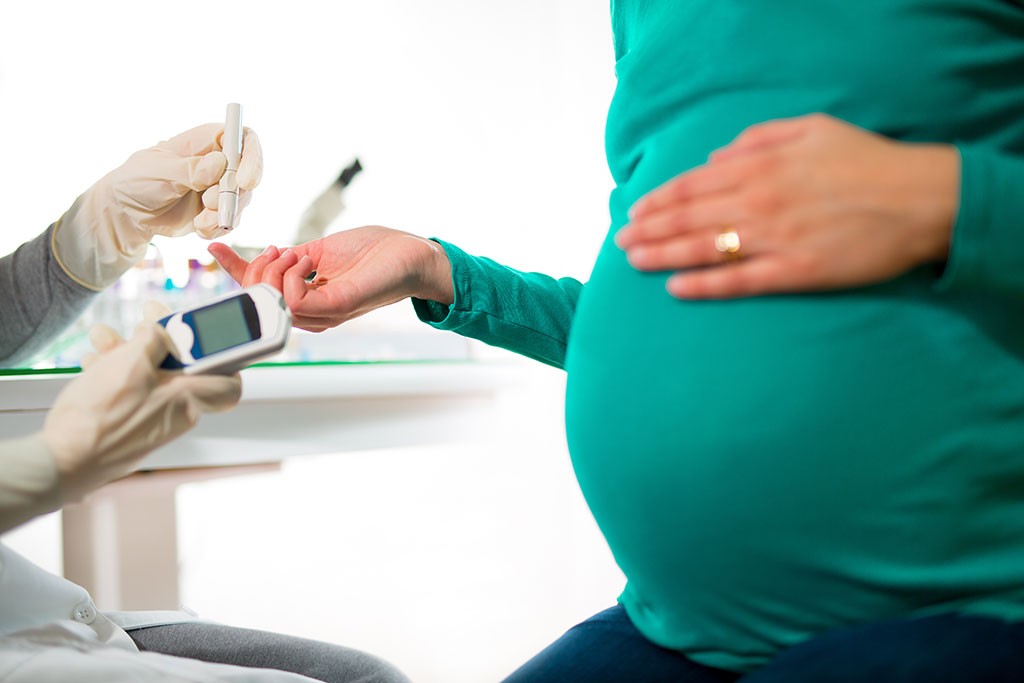Diabetes can significantly slow down wound healing, making even minor cuts and sores a serious concern. High blood sugar levels impair blood circulation, immune response, and nerve function, all of which are crucial for effective healing.
Understanding why wounds take longer to heal in diabetics is essential to prevent complications and improve recovery. This article explores why and how long does a diabetic wound take to heal, common challenges, and effective tips. And promoting wound recovery in diabetic patients.

Understanding Why Diabetic Patient Wound Not Healing Fast?
Diabetes affects multiple systems in the body, many of which are crucial to the natural healing process. Elevated blood sugar, or hyperglycemia, creates a cascade of issues that hinder wound repair. Here’s an in-depth look at the factors behind slow wound healing in diabetics:
High Blood Sugar Levels (Hyperglycemia)
- Elevated blood sugar is a core contributor to delayed wound healing in diabetics. High glucose levels impair the function of cells involved in tissue repair. It slows down the production of important proteins like collagen, which helps rebuild damaged tissue.
- Hyperglycemia also thickens blood vessels. Thus restricting the blood flow, oxygen flow, and nutrients to the wound site. This nutrient deficit compromises the body’s natural healing ability, making it harder for wounds to close and recover.
Poor Blood Circulation
- High blood sugar inflicts damage to blood vessels. This damage causes peripheral arterial disease (PAD). In this, the blood vessels narrow and harden, curtailing blood flow to various body parts. Blood flow is disturbed the highest, especially in the extremities (hands, feet, and legs).
- Blood provides the nutrients and oxygen required for tissue healing. Because of this decreased circulation, wounds receive fewer resources to aid in the healing process.
- This lack of adequate blood flow slows down the delivery of essential white blood cells needed to fight infections. Thus making wounds more vulnerable to complications.
Weakened Immune Function
- Diabetes weakens the immune system, impairing the body’s ability to produce and mobilize white blood cells, which are crucial for fighting infections and clearing debris from wounds.
- Additionally, high glucose levels might give bacteria the perfect environment to grow, raising the possibility of wound infections.
- In combination, these factors make it harder for diabetics to control infections and prevent small wounds from becoming severe.
Diabetic Neuropathy (Nerve Damage)
- Diabetic neuropathy, a common diabetes complication, leads to nerve damage, particularly in the feet and hands. The NIH website says this is the reason why foot wounds are so common in diabetics.
- Nerve damage reduces sensation in the affected areas. This simply means diabetics may not notice minor cuts, blisters, or abrasions. Thus allowing these injuries to worsen without early care.
- A study published by PubMed shows diabetic patients have a twofold increased risk of peripheral vascular disease compared to non-diabetics. Also, the study showed that 49.7 % of diabetics, on average, have peripheral artery disease.
Impaired Skin Barrier and Collagen Production
- Diabetes can compromise the skin barrier, making it more prone to injury and less resilient to pressure and friction.
- High blood glucose levels also interfere with collagen production, which is essential for building new tissue and closing wounds.
- The body’s slower collagen synthesis and poor skin structure reduce the speed and effectiveness of the repair process. Thus leaving wounds open for longer and vulnerable to complications.
Oxidative Stress and Inflammation
- Chronic high blood sugar can lead to oxidative stress. Excess free radicals produced by oxidative stress harm tissues and cells.
- This oxidative stress often triggers chronic inflammation around the wound site, further delaying healing.
- The prolonged inflammatory response disrupts tissue repair. The body remains focused on controlling inflammation rather than progressing to tissue rebuilding and closure.
Risk of Infection
- High glucose levels in diabetic patients create a favorable environment for bacteria. Thus making infections more common and harder to control.
- Infections cause further tissue damage, complicating the healing process and sometimes leading to the formation of abscesses.
Each of these elements raises the risk of infections and serious consequences in addition to slowing wound healing. Therefore, it is crucial for diabetics to understand and actively manage their wound care.
Read More: Top 10 Diabetes Medications


Common Types of Wounds in Diabetic Patients

Diabetics are particularly prone to certain types of wounds due to complications. These include neuropathy, poor circulation, and a weakened immune response. Understanding these common wounds can aid in better prevention and management.
Diabetic Foot Ulcers
Foot ulcers are among the most serious wounds in diabetics. According to the Advancing Foot and Ankle Medicine and Surgery website, diabetic foot ulcers affect about 15% of patients at some point.
Neuropathy often causes a reduced foot sensation, so small cuts, blisters, or pressure sores can go unnoticed initially. These ulcers can deteriorate rapidly and, in severe cases, lead to even amputation. Reports by the Advancing Foot and Ankle Medicine and Surgery website suggest diabetic patients are 15 times more likely to have amputations due to foot ulcers.
Cuts, Blisters, and Minor Injuries
Even minor injuries like cuts, scrapes, or blisters can become major concerns for diabetics, particularly in areas with diminished feeling, such as the feet.
Skin Infections and Abscesses
Diabetics are at an increased risk of skin infections, such as cellulitis and abscesses, which cuts, insect bites, or spontaneous skin breaks can trigger. Because high blood sugar levels provide bacteria with the perfect environment, these illnesses frequently worsen rapidly.
Pressure Sores or Bedsores
Diabetics, especially those with limited mobility, may develop pressure sores from prolonged pressure on areas like heels, hips, or the back. Poor circulation and reduced immune function make it difficult for these sores to heal.
Fungal Infections
Diabetics often experience fungal infections in warm, moist areas like the feet, underarms, and groin. Common infections include athlete’s foot and candidiasis, which can cause skin to break. Excess blood glucose can promote fungal growth, further complicating wound healing.
Slow-Healing Surgical Wounds
After surgery, diabetics frequently experience slower healing due to poor blood flow, high blood sugar, and a delayed immune response. Surgical wounds in diabetics require close attention to avoid infection.
Importance of Timely Treatment and Wound Care
On why sugar patient wound not healing fast, the answer lies in taking specific care. For diabetic patients, timely and proactive wound care is essential to prevent complications like infections, tissue damage, and even amputations in severe cases. Diabetic wounds can progress rapidly from minor issues to serious health risks.
It is due to impaired immune response, reduced blood flow, and delayed healing. Seeking prompt medical attention for any injury—even small cuts, blisters, or abrasions—ensures that the wound receives the necessary treatment.
Natural home remedies for diabetic wounds include regular cleaning, applying antibacterial ointments, and keeping the area covered and moist to protect against infection. It also often involves blood sugar management, as controlled glucose levels are critical to effective healing.
Diabetic patients may need to monitor wounds closely, especially those on the feet or areas with limited sensation, and consult healthcare providers regularly for wound evaluations and care adjustments.
How can a Diabetic Wound Heal Faster?
Effective wound care is essential for diabetics to prevent complications and promote faster healing. Here are key strategies and answers for how can a diabetic wound heal faster:
Control Blood Sugar Levels
Maintaining stable blood sugar is crucial as high glucose levels slow healing and increase infection risk. Regular monitoring, medication, and a balanced diet help improve immune function, reduce inflammation, and support tissue repair.
Practice Good Wound Hygiene
To avoid infection, carefully wash wounds with water and mild soap. Every day, replace the bandages and apply an antibiotic ointment. Keep an eye out for symptoms of infection, such as redness or swelling, and get help from a doctor if necessary.
Keep Wounds Covered and Moist
Covering wounds keeps them moist, which promotes healing by preventing scabbing. Use non-stick bandages and change them regularly to maintain a clean environment for recovery.
Avoid Pressure on Wounds
Minimize pressure on wounds, especially on the feet, by using protective footwear and cushioned insoles. For other areas, avoid resting or putting weight on the wound to prevent further damage.
Moisturize Skin
Dry skin is prone to cracking, which can lead to new wounds. Regularly moisturize, particularly on the feet, but avoid applying lotion between toes to prevent fungal growth.
Eat a Nutrient-Rich Diet
A balanced, diabetes-friendly diet rich in vitamins C, E, zinc, and protein supports healing. These nutrients aid immune function, collagen production, and cell repair. Include protein, leafy greens, fruits, and whole grains in meals.
Avoid Smoking and Limit Alcohol
Heavy drinking and smoking weaken the immune system and circulation. Reducing alcohol consumption and quitting smoking can increase healing and blood flow.
Perform Daily Wound Inspections
Inspect wounds and skin daily, especially the feet. Use a mirror or get help to check hard-to-see areas. If you notice infection signs or delayed healing, contact a healthcare provider promptly.
Seek Professional Care
Consult your doctor/diabetologist for persistent or severe wounds. Advanced treatments like debridement or specialized dressings can support healing and prevent complications.
By adopting these wound care practices, diabetics can enhance recovery, reduce infection risk, and prevent serious health issues.
Read More: Know What A1c Test Measures
Conclusion
Wound healing in diabetics requires careful management due to factors like poor circulation, high blood sugar, and weakened immune function. Controlling blood sugar levels, practicing good wound care, and seeking timely medical attention are essential. A proactive approach to wound management can help prevent infections, promote faster recovery, and support overall health.Last Updated on by Dr. Damanjit Duggal
Disclaimer
This site provides educational content; however, it is not a substitute for professional medical guidance. Readers should consult their healthcare professional for personalised guidance. We work hard to provide accurate and helpful information. Your well-being is important to us, and we value your feedback. To learn more, visit our editorial policy page for details on our content guidelines and the content creation process.

 English
English












